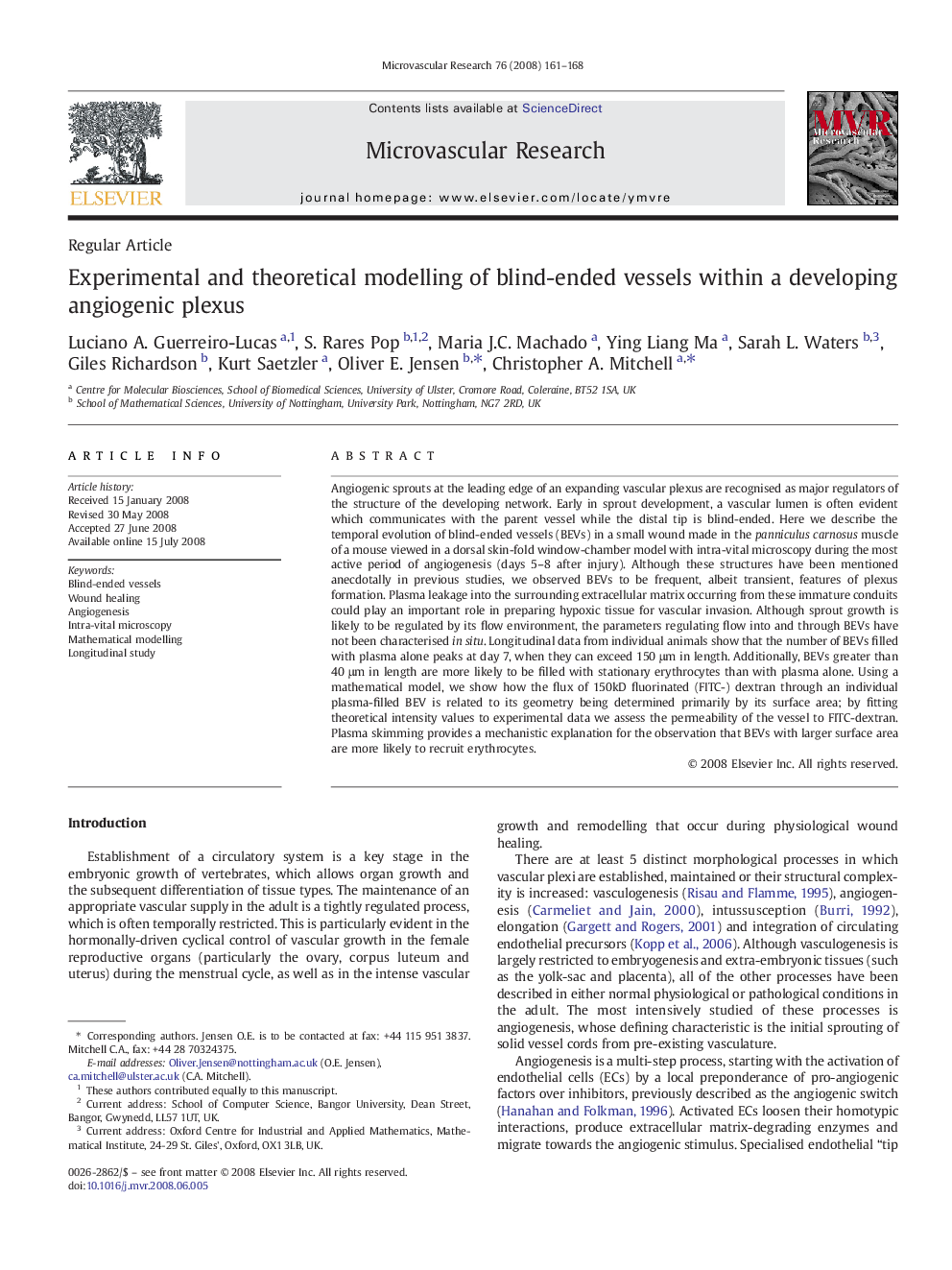| کد مقاله | کد نشریه | سال انتشار | مقاله انگلیسی | نسخه تمام متن |
|---|---|---|---|---|
| 10827204 | 1064972 | 2008 | 8 صفحه PDF | دانلود رایگان |
عنوان انگلیسی مقاله ISI
Experimental and theoretical modelling of blind-ended vessels within a developing angiogenic plexus
دانلود مقاله + سفارش ترجمه
دانلود مقاله ISI انگلیسی
رایگان برای ایرانیان
کلمات کلیدی
موضوعات مرتبط
علوم زیستی و بیوفناوری
بیوشیمی، ژنتیک و زیست شناسی مولکولی
زیست شیمی
پیش نمایش صفحه اول مقاله

چکیده انگلیسی
Angiogenic sprouts at the leading edge of an expanding vascular plexus are recognised as major regulators of the structure of the developing network. Early in sprout development, a vascular lumen is often evident which communicates with the parent vessel while the distal tip is blind-ended. Here we describe the temporal evolution of blind-ended vessels (BEVs) in a small wound made in the panniculus carnosus muscle of a mouse viewed in a dorsal skin-fold window-chamber model with intra-vital microscopy during the most active period of angiogenesis (days 5-8 after injury). Although these structures have been mentioned anecdotally in previous studies, we observed BEVs to be frequent, albeit transient, features of plexus formation. Plasma leakage into the surrounding extracellular matrix occurring from these immature conduits could play an important role in preparing hypoxic tissue for vascular invasion. Although sprout growth is likely to be regulated by its flow environment, the parameters regulating flow into and through BEVs have not been characterised in situ. Longitudinal data from individual animals show that the number of BEVs filled with plasma alone peaks at day 7, when they can exceed 150 μm in length. Additionally, BEVs greater than 40 μm in length are more likely to be filled with stationary erythrocytes than with plasma alone. Using a mathematical model, we show how the flux of 150kD fluorinated (FITC-) dextran through an individual plasma-filled BEV is related to its geometry being determined primarily by its surface area; by fitting theoretical intensity values to experimental data we assess the permeability of the vessel to FITC-dextran. Plasma skimming provides a mechanistic explanation for the observation that BEVs with larger surface area are more likely to recruit erythrocytes.
ناشر
Database: Elsevier - ScienceDirect (ساینس دایرکت)
Journal: Microvascular Research - Volume 76, Issue 3, November 2008, Pages 161-168
Journal: Microvascular Research - Volume 76, Issue 3, November 2008, Pages 161-168
نویسندگان
Luciano A. Guerreiro-Lucas, S. Rares Pop, Maria J.C. Machado, Ying Liang Ma, Sarah L. Waters, Giles Richardson, Kurt Saetzler, Oliver E. Jensen, Christopher A. Mitchell,